
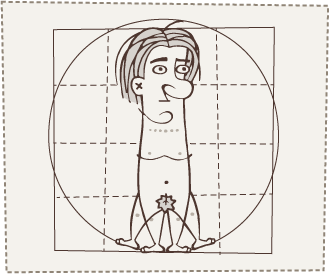


Avoirdupois. That’s the answer to why we measure things the way we do. What on Earth is avoirdupois? Glad we asked. It’s the system of weights widely used in English-speaking countries based on a pound of 16 ounces or 7,000 grains. That’s not the entire answer, there are other measures that go back before there was an England, and before there was a word avoirdupois. While we won’t explain every measure we use, like pecks, pints, yards and such, we will answer the following burning trivia questions:
Jump to the entry by clicking the bulleted point
As for every other measurement, there are so many we could write an entire book about it all. OK, we couldn’t, but somebody certainly could. For here and now you’ll just have to be satisfied with what follows.
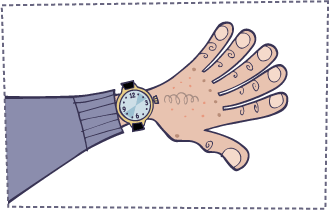
Q: Why are there 24 hours in a day and 60 minutes in an hour? Why not a metric clock with 10 hours of 100 minutes or something?
A: Our story is, these time measures come from the ancient Sumerians who counted in units of 12 with their fingers instead of ten. Which might have you wondering if Sumerians where six-fingered, 12-toed freaks or something. Not at all. They just saw the hand differently for counting.
Instead of seeing each finger (and the thumb) as one each, the Sumerians saw four fingers made of three bones each. By counting these segments you go up to twelve on one hand instead of ten on two. That’s four fingers of three segments each, or 4x3=12 for the mathematically challenged.
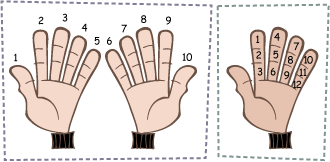
In this method you don’t count the thumb, you use it to indicate the segment you’ve counted to. To show seven the other way you extend seven digits on two hands as below left. In the Sumerian method to count seven you touch your thumb to the seventh segment on the tip of the ring finger as below right.
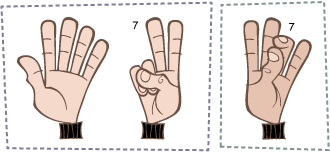
This leaves the other hand free for bigger numbers. In this case each of the four fingers represents a full four fingers of the other hand, or 12. This makes the index finger 12, the middle 24, the ring finger 36, and the pinky 48. Counting each digit as a single number, even if you took off your shoes and socks the highest you get to is 20.
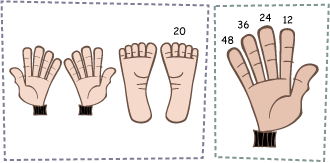
On the other hand, or on both hands actually, the highest number you get with the Sumerian system is 60. That’s 48 on the right hand plus the 12 on the left. That’s why there’s 60 minutes in an hour and 60 seconds per minute. The 24 hour day is 12 hours of daylight and 12 hours of night. All come from the Sumerian way of counting to twelve and sixty with the fingers.
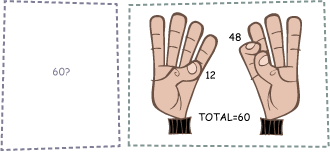
Whether it was really due to the Sumerians is arguable, but there’s no doubt that our clock is base twelve instead of ten. When you consider it, a base twelve system is quite useful because it divides to whole numbers easily. Twelve hours divides in half (6), thirds (4), and quarters (3) evenly. Even better, 60 minutes divides in half (30), thirds (20), quarters (15), fifths (12), and sixths (10) evenly. Try that with 100 and you get 50, 33.3333…, 25, 20, and 16.666… respectively.
Base twelve shows up in other places: 12 months, 12 in a dozen, 12 inches in a foot. The size of an inch is related, too. The average adult man’s index finger is around three inches long with each segment being about one inch. Yet, none of this explains why clocks have hands without any fingers at all. Unless it’s a Mickey Mouse watch. But then, Mickey only has three fingers and a thumb.
Q: Which is quickest: In a moment, in a second, in a New York minute, in a jiffy?
We suspect a jiffy and a New York minute are about the same, but neither being standard time units we don’t know for sure. A second is called a second because it’s the second division of an hour, a minute being the first. A second is one 60th of a minute, whether in New York or elsewhere, so by our reckoning a second is quicker than a New York minute or a jiffy.
This brings us to a moment, which nowadays is rather nebulous but in the distant past was an actual unit of time. On a sundial there were forty moments per solar hour. The earliest reference to the moment comes from the Venerable Bede in the eighth century: one hour is four points or five lunar points which are ten minutes equal to 15 parts, or all together 40 moments. Got that? Doen’t matter, with the advent of the mechanical clock that all went bye-bye. Just as well because a solar hour was not the same from day to day as it varied with the time from sunup to sundown.
So then, there are forty moments per hour and sixty minutes per hour making a moment one and a half minutes. Seems to us that makes “in a second” the quickest. QED.
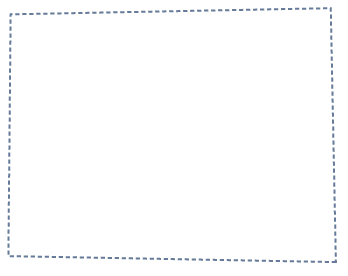







Q: Why is a mile 5,280 feet rather than a nice round 5,000 feet or something?
A: It’s because a mile is based on X number of furlongs rather than so many feet or yards or whatever. The X number being eight. The word furlong comes from furrow-long, the length of a plowed field. Somehow, sometime a furlong was set as 660 feet. Eight furlongs make a mile. Eight times 660 feet is 5,280 feet, a mile.
Nobody outside of horse racing uses furlongs very much any more. In days of yore furlongs were more meaningful than miles to the average man on the street because most folks worked on farms and farm fields were measured in furlongs. So the average man on the street was in a field and not on the street, but we’ll not linger over that. Anyway, it was important for farmers to keep track of farmland measured in furlongs, but not so important to know how far it was from London to York measured in miles. So when they finally ironed out what a mile would be they based it on furlongs. That’s our story and we’re sticking with it.
It’s pretty hard for folks nowadays to relate to a furlong. We might be able to think in terms of football fields, which are 100 yards long, or 300 feet. Not counting the endzones. That’s a bit under half a furlong. A Canadian football field is 110 yards long, 330 feet. Which is exactly half a furlong. So a furlong is two Canadian football fields. And a mile is 16 Canadian football fields. Which might be relatable if you lived in Canada, except they mark their roads in kilometers. Before you ask, we must admit we have no idea how many football fields, either American or Canadian, there are in a kilometer.
Q: OK, a mile is eight furlongs. So then, why is a nautical mile longer than a mile on land?
A: Nautical miles are longer because sailors tend to exaggerate everything. Fish stories, tales of sirens, hippogriffs and “Ar-r-rh, matey, here be monsters.” Not being sailors, we’ll give it to you straight. The nautical mile is not based on so many feet, or furlongs, where the mile on land is. Rather than an adding up, it’s a dividing down.
A nautical mile is one minute of arc at the equator. Which makes a nautical mile a subdivision of the circumference of the globe (1/21,600th) rather than a multiple of feet or what-have-you. As a result, a nautical mile is about 15% longer than a regular mile. We guess that was close enough so they called them both a mile. Confusing, perhaps, but so it goes. Why they couldn’t come up with a new word, we don’t know.
This is a little odd because sailors make up their own words for lots of other stuff. A floor is a deck, a rope is a line, a toilet is a head, a barrel of water is a scuttlebutt. Even left and right are port and starboard. Or the other way around, we never could get that straight. We suppose they do this just to confuse us landlubbers. If so, it works.
Q: You explained nautical mile. What’s this other term sailors use, knots?
A: Unlike statute miles and nautical miles, a knot is a speed and not a distance. A knot is one nautical mile per hour. Since a nautical mile is one minute of arc, a knot is one minute per hour. Which doesn’t make sense for time but does for speed.
Knot comes from the way they used to measure speed before they had speedometers. They did this with a log on the end of a rope, called the stuff line, which was marked at intervals with knots. They’d drop the log into the water and sail away from it. Speed was the number of knots paid out on the stuff line over a set time.
Landlubbers don’t have a single word for speed. We say miles-per-hour, mph. Maybe we could turn mph into a word, meph. Or mepah. Or mpah, pronounced pah with a silent M. But most places use kilkometers-per-hour, which would be keph. None of these have a nice ring to them in our estimation.
Perhaps we could take a page from flying where they have mach, the speed of sound named for Ernst Mach. So we might have land speed named after someone having to do with the steam locomotive or something. Instead of going 75 miles-per-hour you could be going 75 stephensons. Though stephenson, being three syllables, is no shorter than miles-per-hour. To keep it short and sweet we could make it 75 stephs.
Besides being unclear whether steph should be pronounced steve or steff, it wouldn’t be universal since most places go by kilometers. Anyway, we already have a speed word that would work on land, knots. We could use that, but it’d mean changing all car speedometers and speed limit signs. Seems hardly worth the bother.
Q: I get furlongs, knots, miles and nautical miles. Now then, what’s a fathom and a league?
A: A fathom is six feet. Or two yards if you’d prefer. Fathom comes from Middle English fathme, which comes from Old English faedm, meaning “outstretched arms.” Guess folks were bigger back in the day what with six foot arm spans and twelve inch long feet. All the same, though it’s highly unlikely anyone will ever ask you, a furlong is 110 fathoms and a mile is 880 fathoms.
Just like furlong, folks don’t much talk about ye olde fathom any more. Except to say something like, “That’s hard to fathom.” In which case fathom means understand rather than six feet. Though that meaning of fathom comes from the other meaning of fathom.
Sailors used to fathom the deep, that is they’d measure water depth under their ship. They did so with a weighted rope marked off in fathoms dropped over the side. In the open ocean the sea floor was often so deep their rope wasn’t long enough to touch bottom. In which case the depth was unfathomable, it couldn’t be measured, it was hard to fathom. From there it was a easy step from if you fathom it, you knew it.
A league is three statute miles. It comes from medieval Latin leaga, a measure of distance. A league is another of those measures rarely used any more. About the only time you’ll run across it is in old writing. Like in Jules Verne’s 20,000 Leagues Under the Sea or “The Charge of the Light Brigade” by Alfred, Lord Tennyson.
Half a league, half a league,
Half a league onward,
All in the valley of Death
Rode the six hundred.
A league is 2,640 fathoms. Not that the Light Brigade cared much about that. They had other things to worry about. File that under absolutely worthless information.
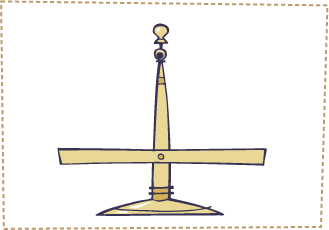



Q: Why is pound abbreviated lb. when there’s no L or B in the word?
A: It’s confusing because lb. is not an abbreviation for the word pound, but an abbreviation of a Latin word for weight, libra. In which case the abbreviation makes sense. Sort-of. The word pound derives from the Latin pondo, “by weight.” Why they took one Latin word for the measure and a different Latin word to abbreviate the first Latin word is something of a puzzle.
Libra also explains the symbol for British money, the pound. You know, £. It’s a script L with a crossbar for Libra. This is found on a computer keyboard at option-3. And shift-3 gets you a different pound sign, #. Well, sort-of a pound sign as it’s only a pound sign on a telephone. Though the phone company originally called it an octothorp. On a computer # is hashtag or stands for number, which is abbreviated no. despite there being no O in number. We’ll explain that in a minute. Or in a moment depending how fast you read.

To go off on another tangent, the astrological symbol for Libra is not £ or # but a horizontal line with a hump in the middle over a straight line. Sort-of a pictogram of a balance scale. You won’t find that on a computer keyboard so you’ll have to type out the word. On a telephone pad you’d have to dial 5-4-2-7-2 to spell libra. Then again, there’s no longer a dial on a phone to dial yet we say dial anyway.
Though you didn’t ask, here’s why ounce is abbreviated oz. even though there is no Z in ounce. It stands for the Italian onza, ounce. This comes from the Latin uncia, meaning one 12th, which is also the source of the term “inch.”
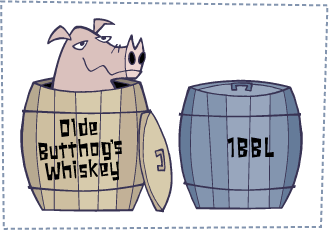

Q: Alright, Mr. Measurement, how much is a buttload? Gotcha there, eh?
A: Believe it or don’t, a buttload is a real unit of measure. Sort-of. A butt is two hogsheads. So you ask, what’s a hogshead? Butt and hogshead both were traditional measures of wine and other spirits. A hogshead is sixty-three gallons. Making a butt 126 gallons. That’s a whole buttload of booze.
You can file that under “I never even thought about it.” Had you thought about it, maybe you’d imagined buttload was a sloppy version of boatload. A boatload is… depends on the size of the boat. They haven’t come up with a standard boatload unit of measure.
Tanker ships don’t ply the sevens seas full to the gunwales with potent potables, but they range in capacity from around 500,000 to 4 million barrels of oil. A barrel of oil is about 42 US gallons. If you do the math that comes out to 21 to 168 million gallons of oil. Yep, one helluva buttload, or boatload, of oil. Though a vessel that big is a ship, not a boat. So we’re talking about a shipload, which sounds a lot like the even ruder… uh, you know.
If you noticed, a hogshead is one and a half barrels and a butt is three barrels. Who decided a barrel is 42 gallons is a mystery lost in the mists of time.
Q: Why is number, which has no O, abbreviated no. and barrel, which has one B, abbreviated bbl.?
A: Up first, number is no. because it’s an abbreviation of “numero,” the ablative case of the Latin “numerus.” Which now has us asking, what the heck is the ablative case?
Ablative: [grammar] of, relating to, or constituting a case expressing typically the relations of separation and source and also frequently such relations as cause or instrument.
Get that? No worries. English doesn’t have the ablative case. Now then, where does the extra B in bbl. for barrel come from?
In the early days of the oil business kerosene was shipped in blue barrels and gasoline in red barrels. As the standard 42 gallon kerosene barrels were more plentiful, the term “blue barrel” came to identify 42 gallon barrels verses other size barrels. Which means bbl. really stands for blue barrel, hence the extra B.
Online sources have it the extra two gallons (above 40) was to allow for evaporation and leaking during transport. We have our doubts about that story because the liquid measures in containers go way, way back. These are often divisible in thirds, multiples of six, and whatnot. For instance, a barrel is one third of a butt. Half a butt is a hogshead. Two butts is a tun. A puncheon is 72 gallons, six times 12. A barrel is six times seven, 42 gallons.
Maybe. Various sources give various measures. Some say old time barrels were 36 gallons. We can only wonder who’s got the real skinny on it. Still, at least now you know how no. and bbl. came about.
Q: Which is bigger, a tad or a smidgin?
A: Nobody knows. Thing is, we have a bunch of measures everyone uses that are not quantified at all. As in, “Move it up a tad” or “Widen it a bit” or “Bump it up a skunch” or “Drop it down a notch.” Besides knee high to a grasshopper and big as a breadbox, as if that were a standard unit, we have the following:



These are not exactly exact, to say the least. Though we think a yea is bigger than a yie by two tads and a skunch, give or take a hair. All the same, some folks take some of these into the realm of ultra-precise imprecise measurements. As in, “Move it up a half-a-smidgin.” As if one should know there are 3 half-a-smidgins in a hair or something. Then again, some employ more than one kind of hair depending on color and bodily location. But that’s just rude, so we’ll leave it at that.
© Terry Colon, 2019